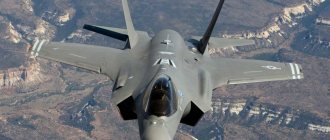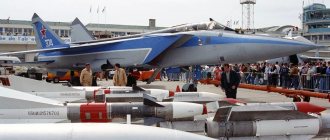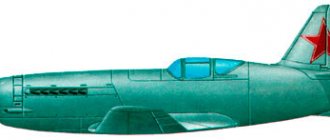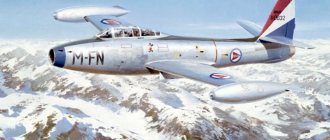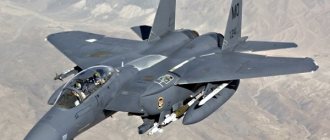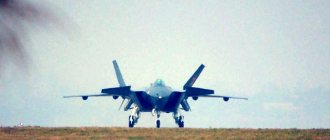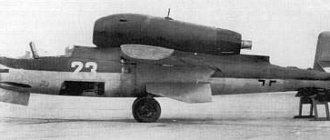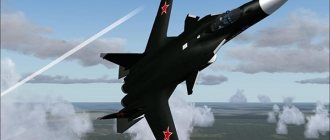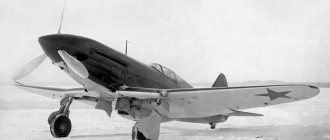On December 12, 2022, two F-35 Lightning II multirole fighter jets arrived in Israel, making the country the first American ally to field these new aircraft. Previously, the Israeli military leadership has repeatedly expressed admiration for the operational capabilities of this latest fifth-generation fighter. Israeli Air Force Commander General Eshel called the introduction of the F-35 a “real revolution” that will help his country maintain air superiority in the region in the next decade, as well as neutralize the threat posed by the Russian S-400 air defense systems deployed in Syria. In total, Israel plans to purchase 50 new fighters.
On the other hand, few military programs have generated as much controversy and criticism as the F-35 Joint Strike Fighter. Some experts estimate its final cost at 1 trillion (!!!) dollars. Its development began in the late 80s, but even today the readiness of the fighter raises big questions. US President Donald Trump has already promised to force developers to reduce the cost of the fighter. For domestic “sofa” patriots, the F-35 has long become a favorite target for ridicule, an example of the fact that not only the Russian military-industrial complex knows how to slash budgets. Although it should be noted that the F-35 is criticized most of all in the West.
So what is the F-35? An airplane that would be a real breakthrough, or a failure that would cost the American taxpayer dearly? If the plane is so bad, then why do the Jews equip their Air Force with this machine and rejoice at it? And why did the Americans even need a second, expensive fifth-generation fighter project?
The F-35 is a family of stealth, fifth-generation multi-role combat aircraft created as part of the most ambitious program in aviation history - the Joint Strike Fighter (JSF). The main developer and manufacturer of the fighter was the American aerospace giant Lockheed Martin; other equally eminent companies also take part in the project: Pratt & Whitney, Northrop Grumman, Rolls-Royce, Allison and British Aerospace.
The first flight of the fighter took place in October 2000, and its operation began in 2012. Today, the F-35 is already in serial production (albeit in small-scale production). The aircraft is planned to be produced on a large scale in 2022. By mid-2022, 194 aircraft had been produced.
The F-35 has three “faces”: a ground-based fighter, which was developed for the needs of the US Air Force, a short take-off and vertical landing fighter for the US Marine Corps and the British Navy, and a carrier-based fighter for the US Navy. In the future, the Americans plan to replace with the F-35 a number of aircraft that are in service today: the A-10 attack aircraft, the F-16, the F/A-18 and the AV-8B. The British are thinking of using the F-35 instead of their famous Sea Harrier VTOL aircraft.
Most often they ask, how much does one “thirty-fifth” cost? The aircraft development program cost the American budget $55 billion; each fighter after the start of mass production (depending on its modification) will cost from $83 to $108 million. One hour of F-35 flight costs $30.7 thousand, which is comparable to the costs of the main F-16 fighter.
Currently, the F-35 is already in service with the American army (more than 130 aircraft of various modifications as of 2020); the first vehicles have also begun to be received by US allies: the Netherlands, Japan, Australia, Italy, Israel and the UK.
History of creation
The F-35 Lightning II is the result of an ambitious JSF program, the practical part of which began in the mid-90s. The goal of this program was to create a universal aircraft (fighter-bomber) that would be suitable for arming the Air Force, Navy, and US Marine Corps aviation.
In other words, the developers wanted to create an aircraft with the maneuverability and speed of a fighter, a significant combat load, and the ability to land and take off from the deck of an aircraft carrier. In addition, the modification of the vehicle intended for the Marine Corps was supposed to have a short (vertical) takeoff and landing. If we add to this the criteria of a fifth-generation fighter that the aircraft had to meet, the complexity of the task becomes clear.
The military also insisted that the new fighter have low purchase and operating costs. It should be noted that economic factors were at the forefront during the implementation of the JSF program: the military wanted an inexpensive, universal combat platform that would be ideal for the use of new precision weapons. Much attention has been paid to the cost of maintenance and repair, because these are the cost items that account for more than 60% of the life cycle cost of any modern combat aircraft.
According to the specifications developed at the preliminary stage of the project, the new aircraft was supposed to have moderate supersonic speed (about Mach one and a half) and maneuverability at the level of the F-16 and F/A-18 fighters. The issue of cruising supersonic was not initially raised. The new aircraft was more focused on solving strike tasks; it was also supposed to complement the F-22A at the stage of gaining air superiority. In addition, the new fighter was planned to be used to provide air defense for aircraft carrier formations.
The design of a new attack aircraft began in the mid-80s, research within the framework of the ASTOVL program was jointly carried out by specialists from NASA and the British Flight Research Center. Their goal was to create a vertical take-off and landing attack aircraft to replace the obsolete Harrier.
However, the Cold War was already coming to an end, military budgets were mercilessly cut, so the program was closed in the early 90s. Around the same time, the US Department of Defense came up with a proposal to create a single aircraft that in the future could replace several combat vehicles created in the 70-80s: F-14, F-15E, F-16, F-111 and F-117.
The research phase of this promising concept was completed in 1994, and a year later the US Department of Defense prepared a specification for the competition participants. Boeing and Lockheed Martin took part in it and began developing two demonstrator aircraft, the X-32 and X-35, respectively.
Final tests began in 2001. They showed that the aircraft created by Lockheed was head and shoulders above its competitor. The X-35 took off from a 150-meter-long platform, demonstrated supersonic speed in flight, and was able to land vertically. During the development of the prototype, Lockheed designers collaborated with specialists from the Russian Design Bureau named after. Yakovlev, therefore the design of the vertical landing system has similarities with the design of the Soviet VTOL Yak-141. The X-35 had a separate fan installed rather than rotating nozzles, which created numerous problems with exhaust gases entering the air intakes.
Further funding for the JSF program was provided not only by the US government, but also by a number of its NATO allies: Great Britain, Italy, Denmark, Holland, Canada and Turkey. The Israeli military also became interested in the new vehicle. Even initially, the cost of the program was impressive: they planned to spend more than $230 billion on the development of the fighter and its purchase. However, in fact, the budget was significantly exceeded, and today a number of experts believe that the total amount - including operating costs - will be more than $1 trillion.
The development of the aircraft was difficult. In 2002, engineers discovered that its structure was significantly heavier. A special group was created to reduce the weight of the fighter.
In 2008, Lockheed Martin announced the flight characteristics of the new aircraft and also demonstrated an experimental model of the aircraft.
The F-35 fighter program has experienced a number of budget increases and delays in the start of mass production. A large number of alterations to components and systems of the aircraft constantly increased the cost of the project, causing understandable irritation among the states participating in it. Even small changes in machine design led to the replacement of entire production lines, significantly increasing costs.
In March 2010, the purchase price of one fighter increased to $113 million, after which the Pentagon announced that the cost of the program would increase by 50%. At the same time, a proposal was made to abandon the development of the F-35B modification in order to save money, which caused indignation in the US Marine Corps.
In 2010, Denmark withdrew from the program, but later this decision was partially revised, and a year later Australia announced its refusal to purchase fighter jets, justifying its decision by almost doubling the cost of the aircraft and a seven-year delay in the start of deliveries. Canada and Japan have said they may refuse to purchase the F-35 if its price continues to increase.
In May 2011, the Pentagon made a sharp statement that the price of $133 million was unacceptable.
In 2010, agreements were reached between the United States and Israel on the purchase of twenty aircraft; the Israelis were allowed to install a significant number of systems of their own production on the F-35, primarily electronics.
On February 25, 2011, the first production F-35B took off, and a few months later the first aircraft was transferred to the US Air Force. In 2013, at an aviation exhibition in Paris, the vice president of Lockheed Martin said that Israel would be the first country after the United States to receive the F-35. In November 2014, the US Department of Defense signed a contract for the supply of aircraft; its amount was $4.7 billion.
In 2022, serial production of aircraft began in Italy. In 2020, newly elected US President Trump harshly criticized the F-35 project due to its exorbitant cost. In response, the developers promised to reduce the price to $85 million by 2022.
Gemini brothers
The design of the F-35B is largely the same as the Yak-141. This is explained by the cooperation between Lockheed Martin and Yakovlev Design Bureau in 1991-1997. According to some reports, in 1995, the Yakovlevites, with the permission of the Russian government, sold all the documentation on the Yak-38 and Yak-141 to the Americans.
However, the F-35B also has significant differences. On the Yak-141, two turbojet engines were used to create vertical thrust. The use of a lift fan on the F-35B made it possible to reduce the loss of thrust of the main engine from combustion products entering the air intake and reduced the temperature load on the landing pad coating.
But the designs of both aircraft have common disadvantages: during a normal flight, the aircraft carries “dead weight” in the form of lifting units. They also take up a significant volume inside the fuselage, where fuel tanks are usually located. The result of such design decisions is a significant reduction in flight range (the F-35B has the lowest flight range of the entire 35 series).
Over $56 billion was spent on the development of the aircraft. According to President Trump, the total cost of the project was 400 billion. The cost of one machine on average exceeded 150 million.
After Trump criticized the advanced combat aircraft program over its cost in late 2016, Lockheed Martin announced it would cut the cost of the F-35 fighter jet to $85 million in 2022. At the production line of 200 vehicles, the price for the F-35 will drop to 85 million per unit.
Device
The F-35 is a fifth-generation fighter; during its creation, extensive use was made of the experience gained in the creation of the F-22 Raptor. It should be noted that the F-35 is equipped with more advanced avionics than the Raptor. The fighter's avionics are undoubtedly the most powerful aspect of this combat platform. The F-35 radio-electronic complex includes:
- Multifunctional radar with an active phased array antenna of the second generation AN/APG-81, which can equally effectively detect targets both on the ground and in the air.
- Electro-optical system AN/AAQ-37, which includes six infrared sensors located on different sides of the fuselage. It allows you to detect ballistic missile launches at a distance of 1,300 km, provides navigation when piloting both during the day and at night, warns the pilot about a missile attack, determines the location of anti-aircraft guns, finds air targets and tracks them.
- Passive multi-directional infrared CCD-TV camera with high resolution, which can carry out target designation at significant distances, find enemy objects on the ground and in the air. It also warns the pilot about irradiating the aircraft with a laser beam.
- AN/ASQ-239 individual jamming system.
- A target designation and display system that is integrated into the pilot's helmet and allows him to control the machine using head and eye movements. The F-35 pilot's helmet can generally be called unique: it allows the pilot to see literally through the cockpit. This ability is provided by a large number of video sensors located on the fuselage of the vehicle. Also, systems are built into the helmet that, using images and sound, inform the pilot about flight conditions.
- The cockpit is equipped with a wide-format PCD touchscreen display, which displays information related to the flight and operation of the fighter's systems. It also displays the locations of enemy air defense systems and possible routes to bypass them.
- A voice recognition system that allows pilots to control certain F-35 systems.
- The fighter is equipped with a range of advanced targeting and communications systems. These include the Link 16 data exchange complex, which is often referred to as the “Internet of the Sky.”
Composite materials and the latest technologies are widely used in the aircraft's design. The F-35 is made using stealth technology; the developers have repeatedly stated that its visibility on radar screens is even less than that of the F-22. To reduce the ESR, the aircraft's weapons are located in the internal compartments, although they can also be placed on external hardpoints. The fighter's shape also helps reduce its visibility on radar screens.
It should be noted that the cargo compartment of the F-35B modification is smaller than that of the F-35A and F-35C due to the fan installation.
Modifications of the fighter A and C are equipped with Pratt & Whitney F135 engines - a further development of the F119 model installed on the Raptor. The F-35B is a short take-off version, in the development of which the British company Rolls-Royce Defense took part. Initially, the fighter's developers were not tasked with providing supersonic cruising flight capabilities, but Lockheed Martin management claims that the F-35 is capable of flying at a speed of Mach 1.2 for approximately 240 km.
The design of the power plant of the F-35B modification is interesting. Behind the pilot's cabin there is a fan connected by a rigid transmission to the engine; it is closed at the top and bottom with flaps. During hovering, the fan starts to work, and the engine nozzle deflects down almost at a right angle (95°). The fighter's yaw and roll are controlled using additional nozzles. Takeoff and landing are fully controlled by the on-board computer, which simplifies the pilot’s work.
The F-35B can also take off vertically, albeit with a small combat load and incomplete tanks.
The F-35 uses electrohydrostatic control surface drives, which made it possible to completely abandon the general aircraft hydraulic system and significantly reduce the weight of the fighter.
The F-35 can use a wide range of weapons. All three modifications of the aircraft are armed with an automatic 25-mm GAU-22/A cannon, which is located above the left air intake. Its ammunition load is 180 rounds.
Designed to fight
The Yak-141 was designed to intercept air targets, conduct close combat, and strike ground and surface targets. The aircraft could be operated on runways of limited size and in ship conditions. The Yak-141 took off vertically with a short takeoff with the help of lifting engines and rotating the main engine nozzle by 65° as the thrust increased and the aircraft accelerated, with a “spot” takeoff when the takeoff length did not exceed five meters, and the nozzle also deflected, but narrower at full thrust in afterburner before the start of the takeoff run.
It is interesting to note that even then the airframe of the aircraft consisted of 26% composite materials, including carbon-fiber surfaces of the tail unit, flaps, leading edges and wing flaps. The rest of the structure was mainly made of aluminum-lithium alloy. The power plant was combined and similar to the SU Yak-38. It consisted of a lifting propulsion engine R-79, designed by general designer V. Kobchenko, and two lifting jet engines, designed by general designer A. Novikov.
The test pilot of this aircraft was A. Sinitsyn, chief pilot of the company, deputy chief designer for flight tests. The first flight of the new Yak took place in early March 1987. Three years later he took off and landed vertically.
Modifications
- F-35A. The simplest and most widespread modification of the aircraft, intended for the US Air Force and its allies. This fighter uses conventional runways at land-based airfields.
- F-35I. Aircraft developed for the Israeli Air Force. In fact, this is a regular “land” version of the vehicle (F-35A), on which part of the Israeli equipment is installed: avionics, including an electronic warfare system and fire control system, as well as cabin equipment.
- CF-35. Variant of the F-35A aircraft for the Canadian Air Force. It differs from the standard model only in the presence of a braking parachute (due to icy runways) and changes in the air refueling system.
- F-35B. A modification with short (vertical) take-off and vertical landing, developed for the American ILC. They plan to make this aircraft the basis of the strike power of the new America-class landing ships, which are essentially light aircraft carriers. So far, only Italy plans to purchase fighters of this modification, and Great Britain has already officially abandoned it.
- F-35C. A modification of the aircraft developed for the US and British navies. It is designed to take off from the deck of an aircraft carrier using a catapult and land on it using a finisher (the aircraft has a landing hook). This version of the fighter features a larger wing and tail, allowing it to maneuver more confidently at low speeds and increasing its payload. The F-35C has twice the range of the F/A-18C.
All modifications of the F-35 fighter are 70-90% unified.
Main characteristics
When listing the technical characteristics of the F-35 aircraft, you will have to name them for each modification, since these aircraft have different indicators.
But there are also general similarities. In particular, all of them are designed for only 1 person. The length of the F-35 aircraft “A” and “B” is 15.57 m. The length of the body of modification “C” is 15.67 m. The height of the fighter “A” is 4.38 m, “B” is 4.36 m, “C” – 4.48 m. The wingspan of the first two aircraft is 10.67 m, and that of the F-35 C aircraft is 13.11 m. The area of one wing of the first airliner and the second (A and B) is 42 .7 m2, and the third (C) has 58.3 m2. As for the mass, it is also different. Empty fighter "A" weighs 13,290 kg, "B" - 14,650 kg, "C" - 15,785 kg. The normal take-off weight is:
- modification “A” – 24,350 kg;
- “B” – 22240 kg;
- “C” – 25,896 kg.
F-35 fighter on the runway.
All these airliners have almost the same engines. Engine type: 2-circuit turbojet, equipped with an afterburner. Maximum thrust 1 × 13000 kgf. Only the engine models differ. Everyone has these Pratt&Whitney units installed. The F-35A aircraft is equipped with a 100 engine (model). Fighter engine model “B” – 400, “C” – 600.
Cruising speed is 850 km/h. The F-35's maximum speed is 1,930 km/h. The flight range of the “A” model is 2200 km, the “B” aircraft is capable of flying 1670 km, and the maximum flight range of the “C” modification is 2520 km. The combat radius without refueling is: for “A” – 1080 km, for “B” – 865 km, for “C” – 1140 km. The maximum flight duration is 2.6 hours. The maximum altitude to which this fighter is capable of taking off is 18,200 m.
The maximum permissible operational overload for model “A” is +9 G, for “B” +7 G, for “C” +7.5 G. At normal take-off weight, the wing load is allowed:
- “A”: 569 kg/m²;
- “B”: 520 kg/m²;
- "C": 606 kg/m².
At normal take-off weight, the thrust-to-weight ratio is 0.8 (for the F-35 A modification), 0.88 (for “B”), 0.75 (for “C”). At maximum take-off weight, the thrust-to-weight ratio is 0.67; 0.72; 0.64 respectively. The F-35A aircraft is equipped with a built-in 4-barrel cannon with 180 rounds. Model "B" is equipped with an aircraft cannon with 220 shells. The “C” modification aircraft has the same cannon as the F-35 V.
Project evaluation
The F-35 program is the most expensive military project in human history. Even this fact alone is already an excellent reason to criticize the aircraft, however, despite billions of dollars spent and years of development, flaws are constantly being discovered in the F-35 design. The problems of the aircraft, which costs more than one hundred million dollars, are particularly acute for the public.
Many experts question the F-35's suitability as a fifth-generation fighter. First of all, this concerns supersonic flight without the use of afterburner. However, the developers have repeatedly stated that the fighter has such a capability. There are also questions about invisibility technologies. In 2022, the F-35 lost a dogfight to the F-15 due to poor-quality stealth coating on the fuselage.
The fighter's operating system raises many questions; during a recent inspection, the military was able to detect 276 potential vulnerabilities in it. However, if the software is improved over time, then there are shortcomings that cannot be corrected. These include the following:
- Insufficient thrust-to-weight ratio (0.8-0.85), which is due to the greatly increased weight of the vehicle during its modification.
- High specific wing load, which significantly reduces the maneuverability of the fighter.
- Relatively small mass of weapons that the aircraft can take into the internal compartments.
- Due to its relatively high minimum speed, small payload, and sensitivity to ground fire, the F-35 may not be effective as a close support aircraft. The old and proven A-10 Thunderbolt looks much more preferable in this regard.
The strengths of the F-35 include low visibility for enemy radar and the aircraft’s most powerful avionics system. However, whether they will help the fighter in a real air battle remains an open question.
In conclusion, we note: despite all the criticism, the F-35 is still a fairly advanced and advanced machine. It couldn’t have been any other way: America invested too many resources – financial, organizational, intellectual – into this project. Most of the F-35's problems were initially inherent in the concept of this aircraft, as well as in the understanding of its place in the structure of the US Air Force's weapons.
Excessive arrogance played a bad joke on the Americans: believing that in the new century they would no longer have worthy opponents, they began to create a fighter for wars like the Balkan or Iraqi campaign, in which the enemy was initially weaker in almost all respects.
However, the situation in the world is developing according to a slightly different scenario, new centers of power are emerging - states that are paying significant attention to the development of the armed forces, including effective aviation. With a high degree of probability, we can say that American pilots in the future will have to meet worthy opponents in the sky. And whether the F-35 can guarantee them victory is a very big question.
J-20: performance characteristics
The last aircraft, which will be discussed in this article, is being developed by the Chinese government and can become a serious competitor to the models described above. For a long period of time, it was the American and Russian armed forces that were considered the most impressive in the world, but recently China has reached a qualitatively new level in absolutely all areas, including the production of military equipment. So what about the tactical and technical characteristics of this model? The Chinese fighter has the longest length, which is more than twenty meters, but at the same time it is inferior in wingspan to its Russian competitor. For the Chinese model it is only thirteen and a half meters. The weight of this aircraft is about twenty tons when it is empty, but if it is fully fueled and loaded with all weapons, then the maximum weight reaches 32 tons. As for the maximum weight allowed for takeoff, it is 36 tons, which is not much less than that of the Russian competitor. The mass of fuel that is placed on board the aircraft is more than eleven tons. This is approximately the same figure as the T-50, but at the same time a couple of hundred kilograms higher. Moreover, the Chinese fighter can carry two external fuel tanks, each of which adds four tons of fuel mass. As for the engine, it's still quite vague - there are two prototypes that could be the main ones for this model, but so far the most likely model is the Xian WS-15, which is already in production, unlike the prototypes. Well, in terms of maximum speed, the Chinese plane beat the American, but, again, could not catch up with the Russian. This aircraft can reach speeds of up to 2100 kilometers per hour.
Difficult road to heaven
The design of this fighter began in 1975, but the first flight prototype was built only 11 years later. Such a long delay in construction time was explained not by technical, but rather by financial difficulties that the entire Russian aviation industry is still experiencing.
The first flights began in 1987, and two years later flight tests of the Yak-141 ended. The fighter, despite the difficulties in fine-tuning the power plant, turned out to be quite successful. The flight tests were led by the deputy chief designer of the OKB, K. F. Popovich.
The takeoff of the Yak-141, according to eyewitnesses, resembled a plot from some science fiction film. From under the belly of a plane calmly standing on the runway, a yellow-red flame burst out to the accompaniment of roaring engines. At some elusive moment, a fighter painted in a protective color, as if leaning on this fire, began to slowly, completely vertically rise into the sky. At an altitude of several tens of meters, it hovered in the air like a helicopter, and then, retracting its landing gear, began to reluctantly accelerate and, having gained enormous speed in a short time, disappeared into the distance. Having made a sweeping circle, the plane slowed down, stopped in the air and, smoothly descending, landed vertically.
F-35 Lightning 2 will participate in the Canadian Air Force tender for the purchase of new fighters
The Canadian government, as part of an open tender for the purchase of a new combat aircraft to replace the CF-18 Hornet, will not exclude from the list of potential candidates the F-35 Lightning 2 fighter, which it had previously refused to purchase due to its high cost. As Jane's Defense Weekly reports, citing a statement by Canadian Minister of National Defense Harjit Sajjan, on February 18, at the annual defense conference CDA (Conference of Defense Associations), the minister received authority to hold a competition in which several contractors will take part, in including Lockheed Martin with the F-35.
MiG-29K and Gripen-M rejected by India
According to the latest Indian media reports, the Swedish Saab Corporation and the Russian RSK MiG have been informed by the Indian Navy that their “respected proposals” respectively for the Gripen M (Maritime) and MiG-29K have been rejected by the tender committee. The Indian Navy will hold formal negotiations with the remaining two bidders Boeing and Dassault (F-18E/F and Rafale M, respectively), and will also soon request additional technical details and a formal proposal. Both Boeing and Dassault have confirmed that their aircraft can operate on both Indian aircraft carriers without any design changes.
What generation is this?
So, first we need to talk in more detail about what the 5th generation of aircraft is. The fourth generation of aircraft appeared in the sixties of the last century, and ten years later conversations began about what the fifth generation fighters would be like. Considering how difficult it is to develop new technologies in such an area, it is not surprising that such conversations began almost immediately after the appearance of the fourth generation of fighters. The first 5th generation fighter appeared in 2001 - it was the American F-22 Raptor. Since then, no full-fledged fifth-generation fighters have yet been released, but it is worth noting that work is underway in many countries, and four already have models that, as mentioned above, are undergoing flight tests. These countries are the United States of America, the Russian Federation, Japan and China, and China is preparing for the mass launch of two aircraft at once.
But how exactly does the 5th generation of aircraft differ from the fourth? In fact, there are a huge number of differences, so it’s worth listing only the key ones. Firstly, the new generation of aircraft will be much less noticeable on radar. This is achieved in a variety of ways, including through the passive transmission of information from on-board sensors. Secondly, they will have the widest functionality. This means that the new aircraft will be able to effectively engage targets in all directions: in the air, on the ground and on the water. Thirdly, these aircraft will be able to fly at supersonic speeds, but afterburner will not be used. Fourthly, they will be characterized by increased maneuverability. There are a number of other advantages, including the ability to carry out all-aspect fire on selected targets during close air combat, automation of control of on-board systems, increased combat autonomy and much more.
The introduction must end here, because information about real models awaits you ahead. Naturally, we are not talking about the pioneering F-22 Raptor, which was released fifteen years ago. You will learn about the most modern models that have not yet been put into permanent production, but are only at the testing stage. Which fifth-generation fighter is the most effective and promising today? This is exactly what you are about to find out. And three leading models will be compared: the Russian T-50 fighter, the American F-35 and the Chinese J-20.
New F-35. Fighter upgrade to F-35A, F-35B, A-35Cs.
The F-35 Cs tactical fighter resumed test flights after a break caused by emergencies that occurred during tests conducted on the US aircraft carrier Nimitz. The US Navy-supervised flight program for a new generation of fighter jets has resumed.
Testing of take-offs and landings from the deck of an aircraft carrier is underway with the ability to achieve maximum performance of all systems and trouble-free operation of aircraft and aircraft carrier services.
The program to create a new 5th generation fighter worth about $400 billion was suspended after the Pratt & Whitney engine installed on the F-35 caught fire. Problems with the engine systems delayed the F-35's debut in the UK at the annual aviation show, and the test flight schedule was delayed by 45 days. Complications with the F-35 engines have intensified competition for the purchase of US Navy fighters. Some experts are in favor of purchasing the Boeing F/A-18E/Fs fighter for the US Navy as a carrier-based fighter based on aircraft carriers.
The US Air Force plans to have a force of 12-24 aircraft ready for tactical missions by August 2016.
Lockheed Martin is offering the F-35 aircraft for sale, at a discount for international partners willing to participate in financing the project. The company plans to sell 750 aircraft, including 612 units to the following countries: Great Britain, Italy, Australia, Norway, the Netherlands, Denmark, Turkey, Canada, Japan, Israel and South Korea. The preliminary price for the F-35 fighter is 80-85 million dollars with the start of main deliveries in 2019.
The Lockheed Martin F-35 Lightning 2 is a line of single-seat, single-engine fighter aircraft designed for all-weather flight and a variety of tactical missions. The aircraft belongs to the 5th generation models and is capable of performing the functions of an attack aircraft, reconnaissance of enemy air defense systems and collection of data on the conduct of combat operations.
Three main models are being developed:
- F-35A, conventional take-off and landing (CTOL);
- F-35B, short takeoff and landing (SA);
- A-35Cs are combat aircraft based on the Catobar (CF).
The aircraft was designed and built by Lockheed Martin, with active participation from Northrop Grumman, Pratt & Whitney and BAE Systems.
The first flight took place on December 15, 2006. The Department of Defense plans to purchase 2,443 F-35 aircraft to supply the US Air Force, Marine Corps and US Navy. The rearmament program of the US armed forces is designed until 2037.
The F-35 was developed under the JSF program to replace the F-16, A-10, F/A-18 and AV-8B tactical fighter models in the US Armed Forces.
The US Navy intends to buy 480 F-35Cs, the US Marine Corps a total of 80 F-35Cs.
Price
Experts predicted that fifth-generation fighters would become something like gold for the United States. They meant that these planes could be sold very profitably. This is the most expensive weapon in the entire history of mankind. The approximate cost of the F-35 is $180 million. Presumably, the price will be reduced to $80 million. But this will happen only if the manufacturer is provided with an increase in the number of orders.
Many experts consider it inappropriate and irrational to spend such large sums on the production and purchase of fighter aircraft. There have long been reports in the media from various experts who express ideas about where it is better to spend these funds. In the event of the crash of one such fighter, the US Army will lose more financially than if ten drones crash at once.
https://www.youtube.com/watch?v=ypC-tMri62E
